Measuring Recoil Springs
+11
USSR
Wobbley
Aprilian
Magload
LenV
john bickar
dronning
Froneck
Jon Eulette
james r chapman
xmastershooter
15 posters
Page 1 of 2
Page 1 of 2 • 1, 2 
 Measuring Recoil Springs
Measuring Recoil Springs
List members of the original Bullseye-List may have recalled Ed Masaki mentioning that the listed weight on the package tend to be lower than the actual measured weight. Around 10 years ago, Ed was kind enough to measure a number of my extra old recoil springs sitting in my garage which had no labels. He also checked several of my brand new Wolff recoil springs to verified the labelled weights. The recoil spring tester was I believe the only one available which was the gold standard. After a search I don't see it online anymore (made by SDM?? but not sure). I pulled out the box of Wolff springs to reviewed what I had recently posted about the actual spring weight. Here's what we found:
Labelled: 11 lb. actual weight: 12 lb.
12 lb. 13 lb.
12 lb. 13 lb.
13 lb. 13 lb.
13 lb. 14 lb.
14 lb. 14 lb.
16.5 lb. 18 lb.
I also have a 9 lb. and 10 lb. Wolff spring which were not measured, but the 9 lb. "felt" like 10 lbs. The 10 lb. felt like another spring that was measured at 11 lbs.
Has anyone doubled checked their new springs to verify the weight, and have you found any differences to the label? I bring up this topic because when testing loads in conjunction with the recoil springs, there may be a source of error in our findings. Thanks for reading.
Labelled: 11 lb. actual weight: 12 lb.
12 lb. 13 lb.
12 lb. 13 lb.
13 lb. 13 lb.
13 lb. 14 lb.
14 lb. 14 lb.
16.5 lb. 18 lb.
I also have a 9 lb. and 10 lb. Wolff spring which were not measured, but the 9 lb. "felt" like 10 lbs. The 10 lb. felt like another spring that was measured at 11 lbs.
Has anyone doubled checked their new springs to verify the weight, and have you found any differences to the label? I bring up this topic because when testing loads in conjunction with the recoil springs, there may be a source of error in our findings. Thanks for reading.
xmastershooter- Posts : 260
Join date : 2011-06-10
 Re: Measuring Recoil Springs
Re: Measuring Recoil Springs
Why wouldn't Wolff use the most sophisticated spring measuring equipment.?
I think it's like your chronograph doesn't match the factories stated velocity....
Just a view point.
I think it's like your chronograph doesn't match the factories stated velocity....
Just a view point.

james r chapman- Admin
- Posts : 6372
Join date : 2012-01-31
Age : 75
Location : HELL, Michigan
 Re: Measuring Recoil Springs
Re: Measuring Recoil Springs
I don't worry about recoil spring listed weights. I measure coil diameter and length. Gives me a rough guesstimate. Ejection of brass and lock up are how I choose a recoil spring.
Jon
Jon
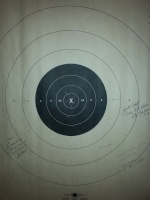
Jon Eulette- Posts : 4399
Join date : 2013-04-15
Location : Southern Kalifornia
 Re: Measuring Recoil Springs
Re: Measuring Recoil Springs
I'm not sure where a friend of mine got it but he has a recoil spring weight measuring device. At the time he showed it to me he did tell me where it can be purchased. So simple I thought I'll make one myself. It's kinda simple. It's a tube of inside diameter suitable for the spring to easily fit inside with a slot cut in the side. A scribed line indicates the compressed length at which the spring is supposed to be in the 1911 for the given weight. An inverted plunger is inserted in the tube to collapse the spring to the scribed line. The stem extends out the bottom with a hook like cut so as to be able to attach weight.
To use it a spring is inserted in the tube followed by the plunger. Weighs are hung from a ring the fits in the hook. Trigger weights will work. Weight is added until the plunger/spring end reaches the scribed line. That is the spring weight for a 1911.
If anyone is interested let me know and I'll ask where it can be purchased, I'm guessing Brownells.
To use it a spring is inserted in the tube followed by the plunger. Weighs are hung from a ring the fits in the hook. Trigger weights will work. Weight is added until the plunger/spring end reaches the scribed line. That is the spring weight for a 1911.
If anyone is interested let me know and I'll ask where it can be purchased, I'm guessing Brownells.
Last edited by Froneck on Tue Aug 29, 2017 9:29 pm; edited 1 time in total
Froneck- Posts : 1762
Join date : 2014-04-05
Age : 77
 Re: Measuring Recoil Springs
Re: Measuring Recoil Springs
$40 at Brownells with digital scale, I have one it works well works for recoil and main springs. Would be easy to make.

http://www.brownells.com/gunsmith-tools-supplies/handgun-tools/magazine-tools/gov-t-length-1911-recoil-spring-tester-prod56227.aspx
- Dave

http://www.brownells.com/gunsmith-tools-supplies/handgun-tools/magazine-tools/gov-t-length-1911-recoil-spring-tester-prod56227.aspx
- Dave
Last edited by dronning on Tue Aug 29, 2017 9:30 pm; edited 1 time in total

dronning- Posts : 2581
Join date : 2013-03-20
Age : 71
Location : Lakeville, MN
 Re: Measuring Recoil Springs
Re: Measuring Recoil Springs
Steve Bathje (sp?) makes a spring weight tester that he sells in his eBay shop. I have one but haven't used it much.
Norman, if you are getting bored in retirement, I can come up with some things for you to do. Just let me know.
Norman, if you are getting bored in retirement, I can come up with some things for you to do. Just let me know.
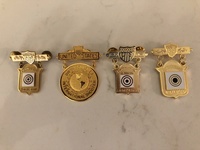
john bickar- Posts : 2280
Join date : 2011-07-09
Age : 100
Location : Menlo Park, CA
 Re: Measuring Recoil Springs
Re: Measuring Recoil Springs
Not very scientific and certainly not calibrated. I use it to tell if one spring is stronger or weaker (compresses more) then another. I have marks on the wall to give me a relative reading compared to known or at least marked values. It works when your like me and want to substitute a stronger or weaker one then the one in the pistol.



LenV- Posts : 4769
Join date : 2014-01-24
Age : 74
Location : Oregon
 Re: Measuring Recoil Springs
Re: Measuring Recoil Springs
The spring weight also needs to be tested at a specific compression distance for that spring.

james r chapman- Admin
- Posts : 6372
Join date : 2012-01-31
Age : 75
Location : HELL, Michigan
 Re: Measuring Recoil Springs
Re: Measuring Recoil Springs
I made a tester that works fairly well but if your scale is not calibrated then testing is best used as a comparison like Len does. Just because your scale was calibrated when new doesn't mean much after a few years. Don
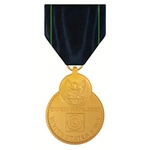
Magload- Posts : 1173
Join date : 2016-11-18
Age : 77
Location : NE Florida
 Re: Measuring Recoil Springs
Re: Measuring Recoil Springs
Calibration is why I don't like anything other than weights. I'm sure a steel weight will change over years of use, some paint might come off if painted or metal wear off from use. Rust might change it too but the amount will be so little I don't worry about it. As with Len V's tester from the Flintstones I doubt that any calibration will be required. It may not indicate the true weight of the spring but it will surely be as accurate a comparison as it ever was.
I'm thinking John's gauge might be the same as the one my friend has, I seem to be reminded that he too got it on ebay. It is similar to the one dronning pictured but not as fancy nor did it have a scale. I'm thinking it's good to have too but as I said I prefer weights. I guess the old fart part of me is showing.
I'm thinking John's gauge might be the same as the one my friend has, I seem to be reminded that he too got it on ebay. It is similar to the one dronning pictured but not as fancy nor did it have a scale. I'm thinking it's good to have too but as I said I prefer weights. I guess the old fart part of me is showing.
Froneck- Posts : 1762
Join date : 2014-04-05
Age : 77
 Re: Measuring Recoil Springs
Re: Measuring Recoil Springs
As like Froneck, I dislike digital scales. I have a Lyman trigger pull weight scale and the digital readouts would vary. Nothing beats the NRA approved weights for trigger pull testing. I use only an RCBS balance beam scale to weigh powder. After reading discussions from the old Bullseye list, I didn't bother to "upgrade" to a digital scale.
Jon, I'll be sending you an email with some of my recoil spring measurements for coil diameter thickness and length and would value your comments. Thanks.
Jon, I'll be sending you an email with some of my recoil spring measurements for coil diameter thickness and length and would value your comments. Thanks.
xmastershooter- Posts : 260
Join date : 2011-06-10
 Re: Measuring Recoil Springs
Re: Measuring Recoil Springs
I found this to be an interesting read and played with the calculator a bit. I didn't have a recoil spring handy to plug into the calculator which is linked from this page. https://www.acxesspring.com/recoil-springs.html
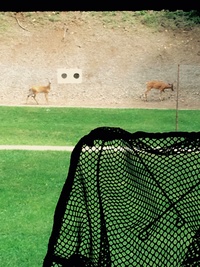
Aprilian- Posts : 987
Join date : 2016-05-13
Location : Minnesota
 Re: Measuring Recoil Springs
Re: Measuring Recoil Springs
I did read the article, at least the first page. They seem to imply that the spring will lower recoil. I don't think so, it might alter the feeling from a sharp jab to a slower push but the amount of recoil will not change! Simply recoil is the opposite reaction of the bullet leaving the barrel. No matter what you do all of it is directed to what ever is holding the gun and in most cases it's the shooter. If taken to the extreme that increasing the spring weight will lower recoil then putting a solid tube in place of the spring, lock the slide then there will be no recoil. In the second paragraph under "The Rate (weight) Of Your Spring" it seems like they are talking about the heavy spring but it's about the light spring. Actually the correct spring is one that will allow the gun to function as it should with the load your using with the sight mounted as it is.
Froneck- Posts : 1762
Join date : 2014-04-05
Age : 77
 Re: Measuring Recoil Springs
Re: Measuring Recoil Springs
You have good points there. They made me think about car suspension and how without a damping fluid and orifices the car just bounces up and down unchecked. In the handgun, the shooter is the "damping system" which bleeds off the recoil energy. To your point, if you want to get rid of the energy in the gun itself, you have to find some way to turn the recoil energy into something like heat. It would be interesting if someone took a small mountain bike shock and used it in a handgun to reduce the recoil felt by the shooter - but then (in the case of the 1911) there might not be enough energy to return it to battery.
It amazes me how John Browning created a gun that was so well balanced that the design is still used - essentially as originally designed.
It amazes me how John Browning created a gun that was so well balanced that the design is still used - essentially as originally designed.

Aprilian- Posts : 987
Join date : 2016-05-13
Location : Minnesota
 Re: Measuring Recoil Springs
Re: Measuring Recoil Springs
Looking for a small mountain bike shock? Yep, they make them. I dug around in the cave and found this shock absorber I bought at a gun show. Works good for full power but not so good for Bullseye loads.



LenV- Posts : 4769
Join date : 2014-01-24
Age : 74
Location : Oregon
 Re: Measuring Recoil Springs
Re: Measuring Recoil Springs
This video shows the 1911 doesn't recoil so much from the bullet being fired, but more from the slide hitting the frame. Notice the impact to the hand and the twisting of the wrist when the slide hits the frame. The recoil spring has almost no effect. This explains why a rib and/or an optic mounted on the slide tends to soften the recoil. As the slide weight goes up the slide velocity goes down.
https://youtu.be/jig-RvZr1OM
https://youtu.be/jig-RvZr1OM

Wobbley- Admin
- Posts : 4805
Join date : 2015-02-12
 Re: Measuring Recoil Springs
Re: Measuring Recoil Springs
I'm building a .38 special 1911 right now that is a single shot; It's a little snug right now. It kicks/recoils like hell in comparison to the .38 pistols that are functioning normally. There is a lot to be said about slide velocity. Majority of 1911 45's kick more than a pistol I build regardless of slide weight and optics. Slow the slide down and recoil is less. I always shoot 'old' match pistols alongside a modern pistol for comparison when I have the opportunity. Why? It's a reminder of proper modern barrel fit vs. old school methods and barrels. Recoil spring weights are over rated. Ejection pattern/distance is my driving force. I don't care what the spring rate/poundage says on the package, I care about what the pistol is telling me when shooting it. All the pistols I build run 10# recoil springs when new for both long and short line loads. Might have to bump it up a pound or two for 'hot' long line loads. Much of the felt recoil is the slide going into battery; heavier recoil spring has more contribution to more felt recoil. So most pistols out there will use #12 to #14 pound recoil spring regardless of frame or slide mounted optics; because of the barrel fit.
Jon
Jon

Jon Eulette- Posts : 4399
Join date : 2013-04-15
Location : Southern Kalifornia
 Re: Measuring Recoil Springs
Re: Measuring Recoil Springs
Spring Rate Calculations.
When I took physics in college I approached my professor to try and calculate slide velocity. Guess what? Not that easy. Why? Barrel retards the slide when properly fit and will slow down the slide. Because the barrel locks and unlocks in a radial arc the upper barrel lugs and slide friction contribute to slow the slides velocity which is linear to the frame/slide. Also the translation/rotation of the pistol in the shooters hand/arm dampens the recoil force. So we can try like crazy to be technical about the spring rate but there are many factors we cannot acvoubt for. Yeah I'm sure NASA could figure it out ;l)
Jon
When I took physics in college I approached my professor to try and calculate slide velocity. Guess what? Not that easy. Why? Barrel retards the slide when properly fit and will slow down the slide. Because the barrel locks and unlocks in a radial arc the upper barrel lugs and slide friction contribute to slow the slides velocity which is linear to the frame/slide. Also the translation/rotation of the pistol in the shooters hand/arm dampens the recoil force. So we can try like crazy to be technical about the spring rate but there are many factors we cannot acvoubt for. Yeah I'm sure NASA could figure it out ;l)
Jon

Jon Eulette- Posts : 4399
Join date : 2013-04-15
Location : Southern Kalifornia
 Re: Measuring Recoil Springs
Re: Measuring Recoil Springs
From an engineering perspective (as opposed to a pure physics perspective) the vast majority of slide velocity is gained by the time the bullet leaves the muzzle. So the impulse from the bullet and powder (ejecta) is about it. Impulse is equal to momentum. For a normal bullseye type load:
I = MV. I = 204 (bullet mass in grains) x 700 ( velocity in fps)
If a slide, recoil plug, bushing and barrel weigh a pound then the slides velocity would be:
7000 x V = 204 x 700 ; V = 204 x 700 / 7000 or 20.4 fps.
If you add mass to the slide the velocity drops. The energy in the slide has to be absorbed by the recoil spring or the shooter when the slide hits the frame. The recoil spring RATE in pounds per inch is the amount of energy the spring can absorb. It has nothing to do with the spring force(weight the spring holds at a compressed length.). That force acts as added mass to the slide (kinda sorta) as does the mainspring and hammer. That's where it gets complicated in the 1911. If you can absorb all the energy in the springs you wouldn't be able to rack the slide.
I = MV. I = 204 (bullet mass in grains) x 700 ( velocity in fps)
If a slide, recoil plug, bushing and barrel weigh a pound then the slides velocity would be:
7000 x V = 204 x 700 ; V = 204 x 700 / 7000 or 20.4 fps.
If you add mass to the slide the velocity drops. The energy in the slide has to be absorbed by the recoil spring or the shooter when the slide hits the frame. The recoil spring RATE in pounds per inch is the amount of energy the spring can absorb. It has nothing to do with the spring force(weight the spring holds at a compressed length.). That force acts as added mass to the slide (kinda sorta) as does the mainspring and hammer. That's where it gets complicated in the 1911. If you can absorb all the energy in the springs you wouldn't be able to rack the slide.

Wobbley- Admin
- Posts : 4805
Join date : 2015-02-12
 Re: Measuring Recoil Springs
Re: Measuring Recoil Springs
Interesting thread. I'm a revolver man, but I do have a Series 70 Gold Cup that I shoot now and then. Bought 2 IMSI recoil springs: one 14# and one 16#. With the 14# spring, the slide would not fully return to battery and lock up. With the 16# spring it works fine. I have no idea how guys are running 10# and 11# springs if my 14# spring doesn't have enough "umph" to return my slide to battery in my Gold Cup. Comments?
Don
Don
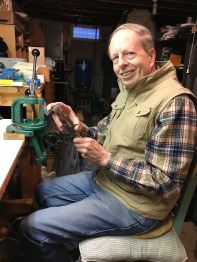
USSR- Posts : 352
Join date : 2017-07-14
Age : 74
Location : Finger Lakes Region of NY
 Re: Measuring Recoil Springs
Re: Measuring Recoil Springs
Has your GC been "smithed" [professionally or amateur] at some point? Tightening the slide rails, the slide, bushings with tight tolerances, etc. can combine to provide enough friction to prevent light rounds or lock up in a 1911 platform.
A 14 pound spring should cycle and lock up the slide.
A 14 pound spring should cycle and lock up the slide.
Blackbird- Posts : 50
Join date : 2017-08-30
 Re: Measuring Recoil Springs
Re: Measuring Recoil Springs
USSR wrote:Interesting thread. I'm a revolver man, but I do have a Series 70 Gold Cup that I shoot now and then. Bought 2 IMSI recoil springs: one 14# and one 16#. With the 14# spring, the slide would not fully return to battery and lock up. With the 16# spring it works fine. I have no idea how guys are running 10# and 11# springs if my 14# spring doesn't have enough "umph" to return my slide to battery in my Gold Cup. Comments?
Don
That's strange. 14# spring is plenty strong enough to hold 99% of 1911's in battery or return it to battery. Gold Cups are typically loose and should have no conflict keeping it from going 100% into battery. What ammunition are you using? Assuming lswc, how far is shoulder of bullet sticking out of case? If out to far its possible that shoulder is hitting the forward edge of the chamber. You can check by dropping cartridge into chamber and looking to whether the rear of case is above, below, or flush with.
If above you probably need to seat bullet deeper.
Jon

Jon Eulette- Posts : 4399
Join date : 2013-04-15
Location : Southern Kalifornia
 Re: Measuring Recoil Springs
Re: Measuring Recoil Springs
10#'r runs my series 80 GC fine.

james r chapman- Admin
- Posts : 6372
Join date : 2012-01-31
Age : 75
Location : HELL, Michigan
 Re: Measuring Recoil Springs
Re: Measuring Recoil Springs
I bought the Gold Cup used more than 25 years ago, so no idea as to whether any "smithing" has been done to it. The ammo was my reloads, and this was several years ago, so I don't recall the particular load, other than it was a target load using the Lyman 452460 bullet. After reading your comments, the only thing I can think of is perhaps the bullet was seated out too far or there was not enough crimp, and the 16# spring was able to overcome the resistance while the 14# could not. In any case, thanks.
Don
Don

USSR- Posts : 352
Join date : 2017-07-14
Age : 74
Location : Finger Lakes Region of NY
 Re: Measuring Recoil Springs
Re: Measuring Recoil Springs
Granted heat is a form of transferred energy but the amount of heat that will be generated by the slide moving isn't very much. Simply put the spring needs something to push against. Eventually that is against the hand. As Jon mentioned there is quite a few factors that have to be considered and will take quite a bit of calculation to compute it and I'm willing to bet the energy absorbed by conversion to heat is going to be a very small amount. Plus what ever is generated that it will be changed by changing the spring weight. Being the article is about the spring, very little will be absorbed by it, yes there will be friction where ever it's rubbing and the heat that will be generated from it flexing. I've never checked for it but I'm thinking after shooting a 900 (90 rounds) that if I were to remove the slide and check spring temperature it will not have increased very much if any, I doubt that the slide will get any warmer either and will probably get warmer from any Sun light it might be subject to. Using a machine gun as an example, the barrel will get quite hot from the ammo being shot yet the mechanism allowing the gun to function has no means to control the temperature nor any guards to prevent burning the hand simply because none is needed.
I feel that spring weight is nothing more than a way to select a spring and similar to the way Jon does it by measuring wire diameter and length. The nice thing about the 1911 spring gauge is a way to determine what those few springs I have that are not marked in my draw of 1911 gun parts are. I'm sure NASA can compute the opium spring weight after taking many measurements from the gun that it's intended to be used on including the ammo. Yet I'm thinking after being put in the gun it might have to be changed.
I feel that spring weight is nothing more than a way to select a spring and similar to the way Jon does it by measuring wire diameter and length. The nice thing about the 1911 spring gauge is a way to determine what those few springs I have that are not marked in my draw of 1911 gun parts are. I'm sure NASA can compute the opium spring weight after taking many measurements from the gun that it's intended to be used on including the ammo. Yet I'm thinking after being put in the gun it might have to be changed.
Froneck- Posts : 1762
Join date : 2014-04-05
Age : 77
Page 1 of 2 • 1, 2 
 Similar topics
Similar topics» Measuring recoil spring rate
» Recoil Springs and.....
» recoil springs
» Recoil springs?
» Recoil springs
» Recoil Springs and.....
» recoil springs
» Recoil springs?
» Recoil springs
Page 1 of 2
Permissions in this forum:
You cannot reply to topics in this forum